





Exploring Southwark and discovering its history
 Search
Search


3 June 2017

The Hop Exchange
The Hop Exchange in Southwark Street is an imposing mid-Victorian building and a reminder of Borough’s past as the centre of the hop trade in London. Built in the neo-classical style, it gives the impression of being a large building with considerable depth but is in fact narrow and wedge shaped and fits onto a long, curved triangular-shaped site between the curve of Southwark Street and the railway line that runs from London Bridge to Charing Cross.
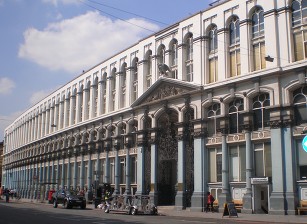
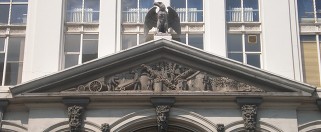
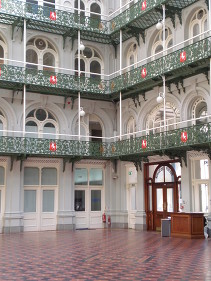
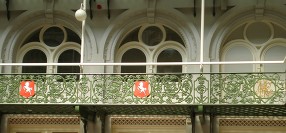
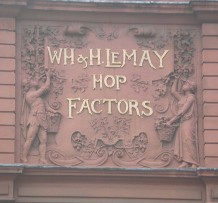
Internally, the galleries that look down on the former central trading floor have iron balustrades decorated with a repeating badge of a white horse, the emblem of Kent, surrounded by swirling hop plants A relief on the pediment over the main entrance depicts the growing, harvesting and transporting of hops.
A hop market had existed in Little East Cheap in the 17th century but gradually the Borough became the centre of the hop trade where hop merchants had their offices and warehouses. The hops were grown in Kent and by using warehouses in the Borough to store them, the journey over the crowded and congested London Bridge could be avoided. There were also a large number of breweries in the area including the leading firms of Barclay Perkins and Courage.
The Hop Exchange opened in the newly built Southwark Street in 1868. The intention was that merchants would set up their stalls in the open area on the ground floor where natural light from a glass roof allowed a proper inspection of the hops. The brewers would then sample the different hops available and make their selection based on a wide choice available. However, the grandiose scheme was not a success. Mr Le May, whose name still looms large in a terracotta plaque on Borough High Street today, explained why the Hop Exchange failed to a Select Committee in 1890:
“The Hop Exchange was started with the idea of having an open market for hops, that the brewers should come and buy off merchants in the open market. The reason why it failed was because the brewers objected to buy off the merchants in the open market: they preferred to buy through the ordinary channels through the merchant. All the stands were let: the small merchants took their samples and exhibited them but no customers came to buy them. The market lasted for something like 18 months … the thing simply collapsed.”
It soon became a general office building and was renamed Central Buildings, but while the Hop Exchange failed, factors and merchants were quick to move into other offices and warehouses in the newly built Southwark Street where they continued to thrive. The Hop Exchange suffered a dreadful blow in 1920 when a fire necessitated the removal of the top two floors.
The Hop Marketing Board was established in 1932 and set the prices for hops which saw the beginning of the decline in the Southwark hop trade. Perhaps more catastrophically, 25 out of 37 hop warehouses were destroyed in the second world war. These were rebuilt after the war at Paddock Wood in Kent which became the centre for the trade. When the London telephone system was installed, the importance of the hop trade was reflected in the exchange code selected for the area as HOP but this piece of history disappeared in the 1960s when telephone numbers were replaced by all digit numbers.
Grade II listed, the building is now used as offices and events venue.